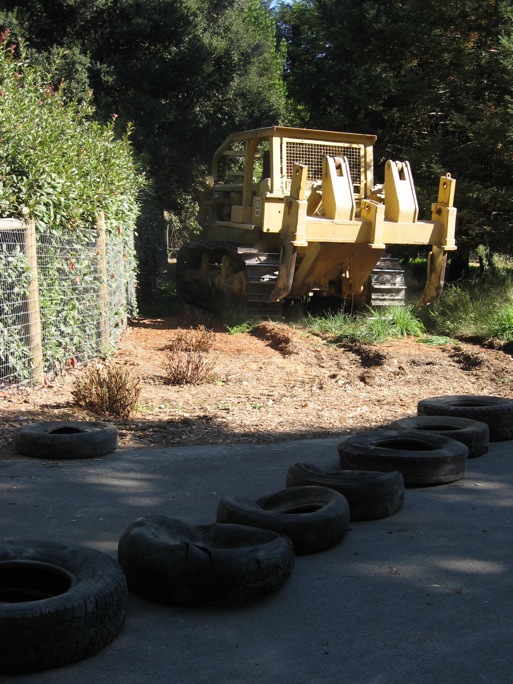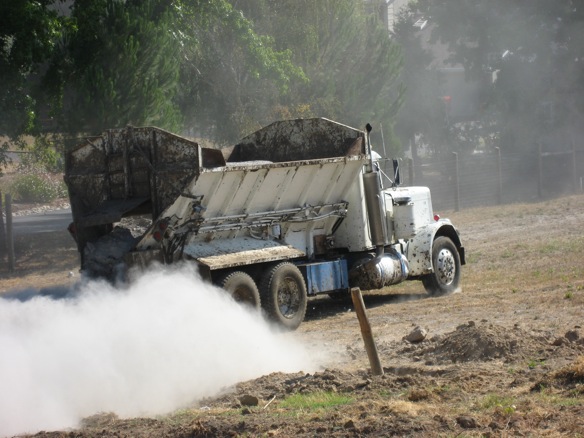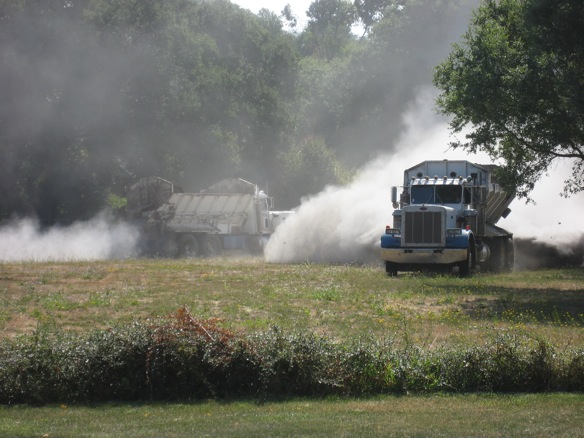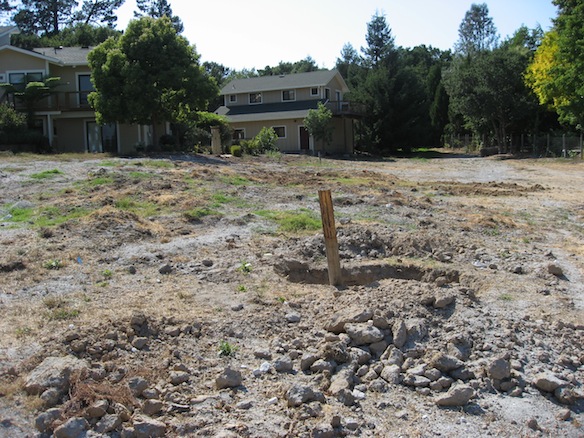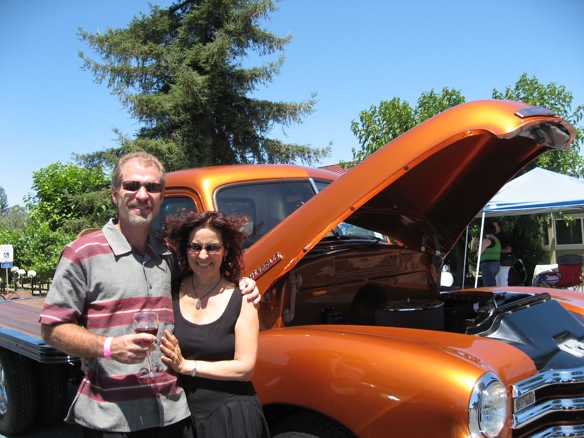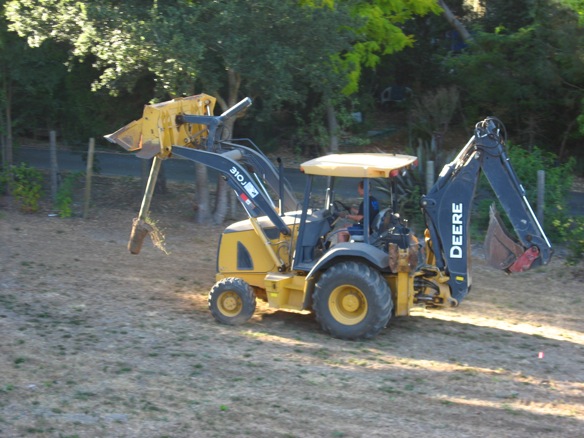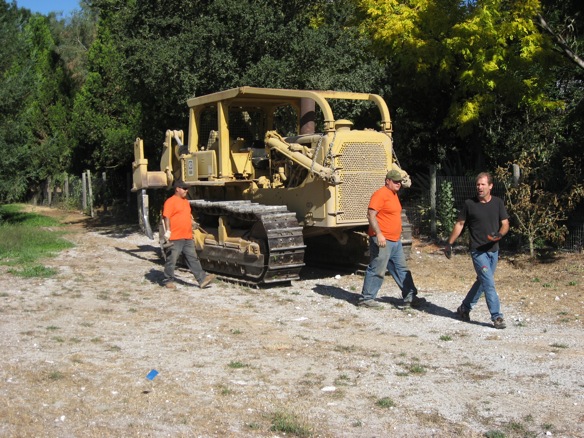 The Cat D8 weighing 55,000 pounds finally arrived on Thursday. Having never had land tilled, I was amazed at how easily the the large tines went into the ground and turned over the soil. Matt made 3 passes on the land….vertical/horizontal/diagonal. He started at around 2 feet and then by the end was down a full 4 feet on most of the land. In the areas over the septic we only went down 2 feet as we didn’t want to ruin our system…..not a good idea. The idea of tilling is to mix in the 27 tons of amendments we put on a field a few weeks ago and also to mix the topsoil with the sand and clay that is below. We are trying to get the pH of the soil to around 6.5 that is ideal for grapes. Most of the amendments were lime and gypsum which will do this for us. In addition, 4 feet of soft soil is ideal for our roots to grow. We could have gone deeper, but the pH of the soil in the 5-6 foot range was very low, so we did not want this for the grapes.
The Cat D8 weighing 55,000 pounds finally arrived on Thursday. Having never had land tilled, I was amazed at how easily the the large tines went into the ground and turned over the soil. Matt made 3 passes on the land….vertical/horizontal/diagonal. He started at around 2 feet and then by the end was down a full 4 feet on most of the land. In the areas over the septic we only went down 2 feet as we didn’t want to ruin our system…..not a good idea. The idea of tilling is to mix in the 27 tons of amendments we put on a field a few weeks ago and also to mix the topsoil with the sand and clay that is below. We are trying to get the pH of the soil to around 6.5 that is ideal for grapes. Most of the amendments were lime and gypsum which will do this for us. In addition, 4 feet of soft soil is ideal for our roots to grow. We could have gone deeper, but the pH of the soil in the 5-6 foot range was very low, so we did not want this for the grapes.
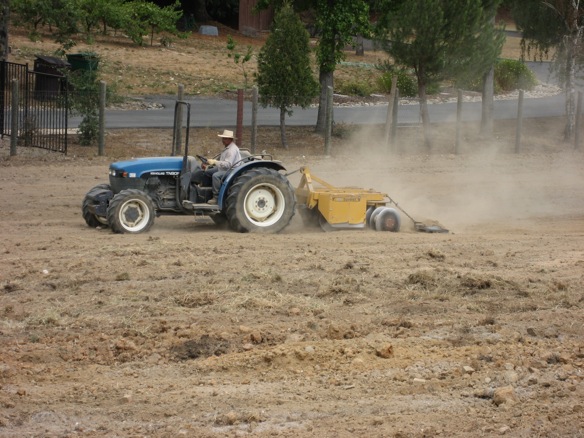 It might be hard to tell from the picture, but after tilling we still had very large clods of dirt. On Friday (and a little this coming Monday) we disced the land. This breaks up the clods and smooths out the land. I can’t believe how fine the dirt is now, especially since just a few days ago I had to use my jack hammer to dig down and find the septic system.
It might be hard to tell from the picture, but after tilling we still had very large clods of dirt. On Friday (and a little this coming Monday) we disced the land. This breaks up the clods and smooths out the land. I can’t believe how fine the dirt is now, especially since just a few days ago I had to use my jack hammer to dig down and find the septic system.
